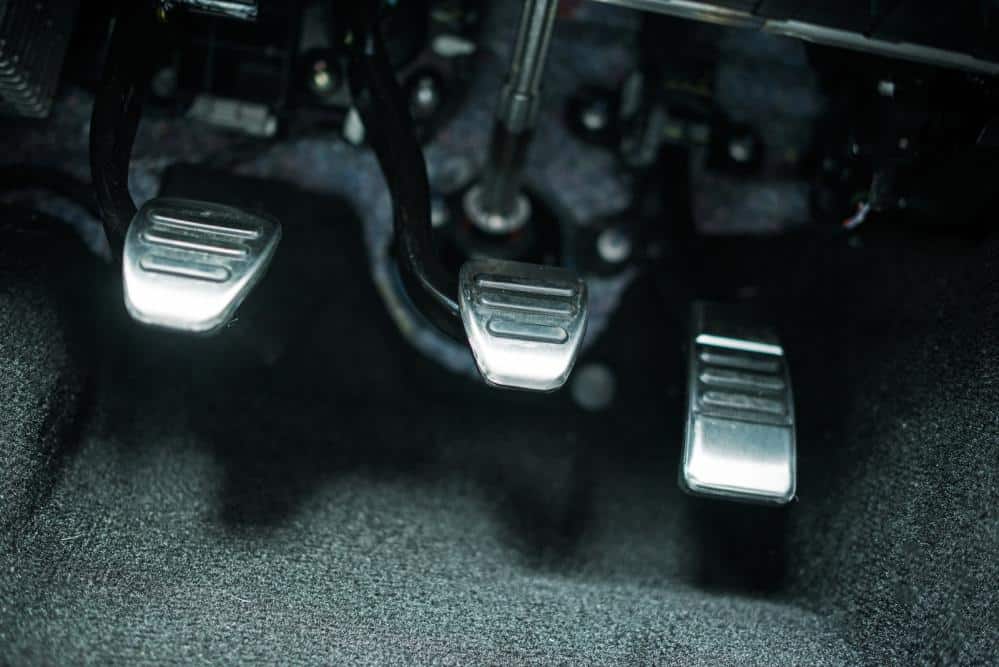You are driving down the road when the car ahead of you comes to a sudden halt. Terrified, you hit your brakes. Nothing happens!
You obviously don’t want to be in a situation – even in your worst nightmare – which involves the collision of your car. This is why it is important to regularly maintain your car’s component including the brake pedal. Sometimes, car owners find it difficult to tell if the car’s brake booster or master cylinder is bad.
In this article, we’ll explain the signs you should look for to tell if the brake booster or master cylinder is bad.
Quick Read: Commons Signs of Bad Brake Booster or Master Cylinder
- The brake pedal doesn’t return to its original position.
- When the pedal at idle is lowered, the engine rpm goes down
- You have to apply more force and effort to push the pedal
Symptoms That Tell if Brake Booster or Master Cylinder is Bad
In modern vehicles, the system of what we call power brakes comprises a brake booster and master cylinder. The brake booster connects the brake pedal and the master cylinder and acts as a multiplier. This means that when pressure is applied on the brake pedal, the brake booster multiplies it. As a result, the driver doesn’t need to put extra pressure on the brake to either stop or slow down the car.
However, when the brake booster is bad or isn’t working act all, you may find it hard to push the brake pedal. If you ever encountered such a case, it is always advisable to have a look. In some cases, the inability to push the pedal on time can lead to grave and deadly consequences. Here are a few signs that indicate that your brake booster or master cylinder is bad.
1. Symptoms of a Bad Master Cylinder
Worn Out Master Cylinder Seals
Over time, the rubber seal on the master cyline will wear out. In case where these seals are not replaced, they may end up contaminating the brake fluid. This will cause the pedal to get doughy or soft. As a result, it will start sinking to the floor, making it difficult for you hit on the pedal in an effective manner.
Abnormal Clutch Pedal Behavior
In case where you find yourself exerting extra pressure on the pedal, the chances are that your car’s master cylinder has air inside them, causing fluid leak. In case where the brake pedal is depressing itself, it means that the brake fluid is heated and unable to expand.
2. Symptoms of a Faulty Brake Booster
Stalling the Engine
If the diaphragm of the brake booster fails, it can end up stalling the egine when the brakes are applied. This is because this malfunctioning diaphragm allows the excess vacuum to seep into the system from the engine. If the engine stalls abruptly, it may lead to fatal accidents.
Application of More Force on the Brake Pedal
Inside the master cylinder, the check valve controls the pressure. When this valve malfunctions, it turns a soft and smooth pedal into a hard and aggressive brake pedal. If you are facing a problem while pressing the brake – or when you observe that you have to exert extra pressure or force on your brake pedals – take your car to the nearest mechanics shop to get it thoroughly checked.
Vehicle Stops at a Longer Distance
This problem arises partly because of the malfunctioning check valve. Because of the air bubbles in the brake lines, you will have to exert extra pressure to apply the brakes. Since the entire application will take some time, your car will take longer to stop even after the brakes are applied.
How to Check the Brake Booster and Master Cylinder
You can easily check the condition of the master cylinder and the brake booster through these easy steps:
- Apply the emergency brake to bring the car to a halt and park it.
- Open the hood and examine the engine. Carefully examine the rubber hose from the brake booster. If you find hard spots, swollen areas, and cracks in the hose, replace it immediately. On the other hand, fluid leaks may indicate the time to change the master cylinder.
- Start the engine and let it sit idle for at least five minutes. Get a spray bottle filled with soapy water. Along the vacuum hoses and fittings, spray the solution. If you observe bubble on the fittings or the hose, they indicate that there is a vacuum leak.
- Turn the engine off. While in the driver’s seat, pump the brake pedal until it stiffens. Observe closely whether the pedal sinks slightly when you start the engine. If that’s not the case, it indicates that you probably have a wornout or broken brake booster.
- Start the engine and let it sit idle for a few minutes. Now, press the brake pedal. If either the engine stalls or the idling drops, it may indicate a vacuum leak in the system.
The Final Word
Even though it is advisable not to drive your car if it is facing any kind of problem, it is quite dangerous to take a car on roads whose brakes are not working. Taking risk in such a situation may lead to tragic incidents. It is quite easy to identify the signs and symptoms of a bad brake booster and master cylinder. In case you ever noticed any of the signs discussed in this article, you should take your vehicle to the nearest shop and get it examined by an expert mechanic.

